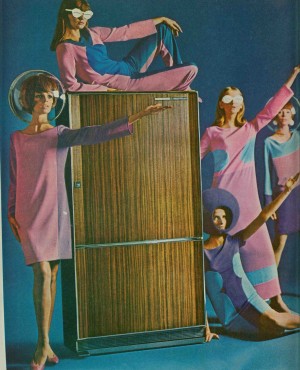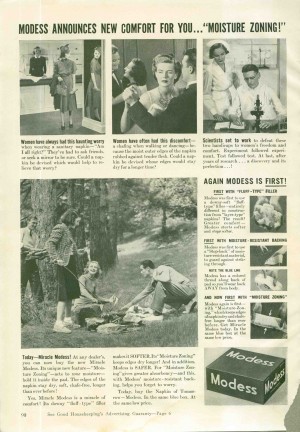Fashion
The Shoelace Experiment

Norbert Elias (1897-1990) was a highly influential sociologist, best known for his two-volume work The Civilizing Process. Among his less well-known accomplishments was his shoelace experiment.
In 1965 and 1966 Elias traveled throughout Europe as a tourist. Deciding to mix sociological research with pleasure, he resolved to find out how people in different countries would respond to him if he left his shoelaces untied. Ingo Moerth summarized the results of this experiment in the June 2007 issue of The Newsletter of the Norbert Elias Foundation:
(2) England - London 1965 (Regent Street, Bond Street): Here Elias conducted three experiments, all of which lasted three hours. He got nine reactions, mostly by older ‘citizens’, as Norbert Elias notes: ‘In England mostly elderly gentlemen reacted by communicating with me on the danger of stumbling and falling’ (in Elias 1967, as translated by Ingo Moerth). This might be interpreted as an established ‘society-context’, where the anonymity is overruled by engaged and experienced citizens watching the public space.
(3) France - Paris 1966 (Champs Elyseés, Boulevard St Michel, Montparnasse): Here Elias conducted three experiments of three hours, but with much less reaction. Only two people communicated directly with him about the visible shoe-lace problem, both sitting in street cafés on the Champs Elyseés, besides a youngster who shouted directly ‘prenez garde’ (‘take care’) into his ear, much to the amusement of the young man’s group of companions. As an explanation of this different reaction, perhaps a different character of ‘public space’ in France may be relevant: mere observation in contrast with engagement and direct intervention, as in London/UK or in Germany (see the following discussion, as cited below).
(4) Germany - for instance Münster 1965: Here the ‘society-context’ mentioned above was – according to Norbert Elias – watched and communicated not by gentlemen, but mostly by women: ‘In Germany older men only looked at me somewhat contemptuously, whereas women reacted directly and tried to ‘clean up’ the obvious disorder, in the tramway as well as elsewhere. Here in most cases a short conversation, comprising more than the obvious ‘shoe-lace disorder’ took place, such as a short warning about what might happen if I didn’t take care of the basic problem’ (in Elias 1967, as translated by Ingo Moerth).
(5) Switzerland: Bern 1966: Here Elias experienced the most elaborate conversation about dangers related to untied shoe-laces, including admonitions about dangers of eating grapes and using trains. He explicitly states: ‘This was probably an exception, from which no conclusion on a Swiss national character can be drawn' (in Elias 1967, as translated by Ingo Moerth).
It would be interesting to conduct this experiment in America. New Yorkers would probably ignore you. In Los Angeles everyone drives, so you'd be lucky if you encountered another pedestrian.
Posted By: Alex - Wed Aug 06, 2008 -
Comments (0)
Category: Fashion, Experiments, Psychology
Follies of the Mad Men #6
[From The Saturday Evening Post for January 29, 1966.]Of course, the very first thing you'll load aboard your interstellar ship is a new Frigidaire. What's that you say? These women are not astronauts, but rather futuristic housewives, and the Fridge remains earthbound? Then why are they wearing those bubble helmets? Future pollution? But what about the helmet that features a cutout? And the slit glasses? If only the geniuses who created this ad were still around, we could ask them to explain....
Posted By: Paul - Tue Jul 29, 2008 -
Comments (13)
Category: Business, Advertising, Products, Domestic, Fashion, Food, Futurism, Literature, Science Fiction, Travel, Space Travel
Armor of God Pajamas

I can't remember the last time I went to church, but if I ever go again, I'm wearing a pair of these.
Posted By: Alex - Mon Jul 28, 2008 -
Comments (1)
Category: Fashion, Religion
Own your own mankini
This post is specially for Paul, since I know he's a big fan of mankinis. For only $17.99 you too can show off your stuff in a bright green mankini next time you're at the pool or beach. Available from Amazon.
Posted By: Alex - Sun Jul 27, 2008 -
Comments (2)
Category: Fashion
The Latest Fashion

It's the latest design presented by Basso&Brooke at the Berlin Fashion show. Looks to me a bit like a poodle in a harem costume.
Posted By: Alex - Mon Jul 21, 2008 -
Comments (3)
Category: Fashion
Follies of the Mad Men #4
[From Good Housekeeping for October 1939.]Here's a great example of Madison Avenue trying to a) make a problem that doesn't exist or is minimal into an overwhelming burden that only their product can alleviate and b) bring the vaunted "miraculous" power of scientists and scientific imagery into the marketing mix.
Did women in 1939--or ever--really ask their friends for a hygienic crotch alert?
Posted By: Paul - Fri Jul 18, 2008 -
Comments (5)
Category: Business, Advertising, Products, Fashion, Hygiene, Science, Gender, Women, 1930s
The latest outbreak of “mankini”

I will definitely not be adopting this look on the beach.
Read the full story here.
Posted By: Paul - Sat Jul 12, 2008 -
Comments (5)
Category: Celebrities, Couples, Fashion, Sexuality, Gender, Sex Symbols
Follies of the Mad Men #2

[From The Saturday Evening Post for December 16, 1967]
Whenever you put a giant woman in a skirt next to normal-sized people, the inevitable first thought engendered in the viewer is, "Can I see up her dress?" In this instance, the second thought is: "Is she going to pick up that car and use it as a marital aid?"
Posted By: Paul - Sat Jul 12, 2008 -
Comments (10)
Category: Business, Advertising, Giant People in Ads, Products, Fashion, Obsessions, Fetishes, Sexuality, Cars
Talkin’ ‘bout My Degeneration
BOOMERS DEFIANTLY PROCLAIM: "WE'RE DRUG-ADDLED, MUSIC-DOMINATING, FREE-LOVE GROOVIES TILL THE GRAVE!""Geezers still get lucky, sez study"
"You go, granny!
"Today's 70-year-olds are having more and better sex than oldsters of the past, new research in the British Medical Journal shows. Women are especially satisfied...."
Report: Illegal drug use up for boomers
"Some moms and dads might want to take a lesson from their kids: Just say no.
"The government reported Thursday that 4.4 percent of baby boomers ages 50 to 59 indicated that they had used illicit drugs in the past month...."
Old bands never really die
"Your favorite ’90s band broke up? Fear not, they’ll be back.
"Seventies and ’80s bands, too. And if not this year, maybe next.
"This summer’s concert calendar boasts tours by reunited rockers and relics — Stone Temple Pilots (split in 2003) and New Kids on the Block (split in 1994) — and recently re-energized bands such as the B-52’s, the Black Crowes, Motley Crue and Yes. A round of reunion shows filled last summer’s slate as well, with the Police, Led Zeppelin, Genesis and Van Halen playing their time-tested hits for fans...."
Posted By: Paul - Fri Jul 11, 2008 -
Comments (1)
Category: Customs, Death, Drugs, Fashion, History, Music, Sexuality
The Moustache Movement

Allan Peterkin more recently explored this nineteenth-century fashion in his history of facial hair titled One Thousand Beards
Sounds like my kind of book!
I haven't shaved with a razor since I last held a nine-to-five job, which was in 2001. If all goes according to plan, I will never use a razor again in my life. I regard them as instruments of torture. Instead, I keep a permanent stubble by trimming my beard every few days with an electric shaver.
Posted By: Alex - Fri Jul 11, 2008 -
Comments (0)
Category: Fashion

| Who We Are |
|---|
| Alex Boese Alex is the creator and curator of the Museum of Hoaxes. He's also the author of various weird, non-fiction, science-themed books such as Elephants on Acid and Psychedelic Apes. Paul Di Filippo Paul has been paid to put weird ideas into fictional form for over thirty years, in his career as a noted science fiction writer. He has recently begun blogging on many curious topics with three fellow writers at The Inferior 4+1. Contact Us |







